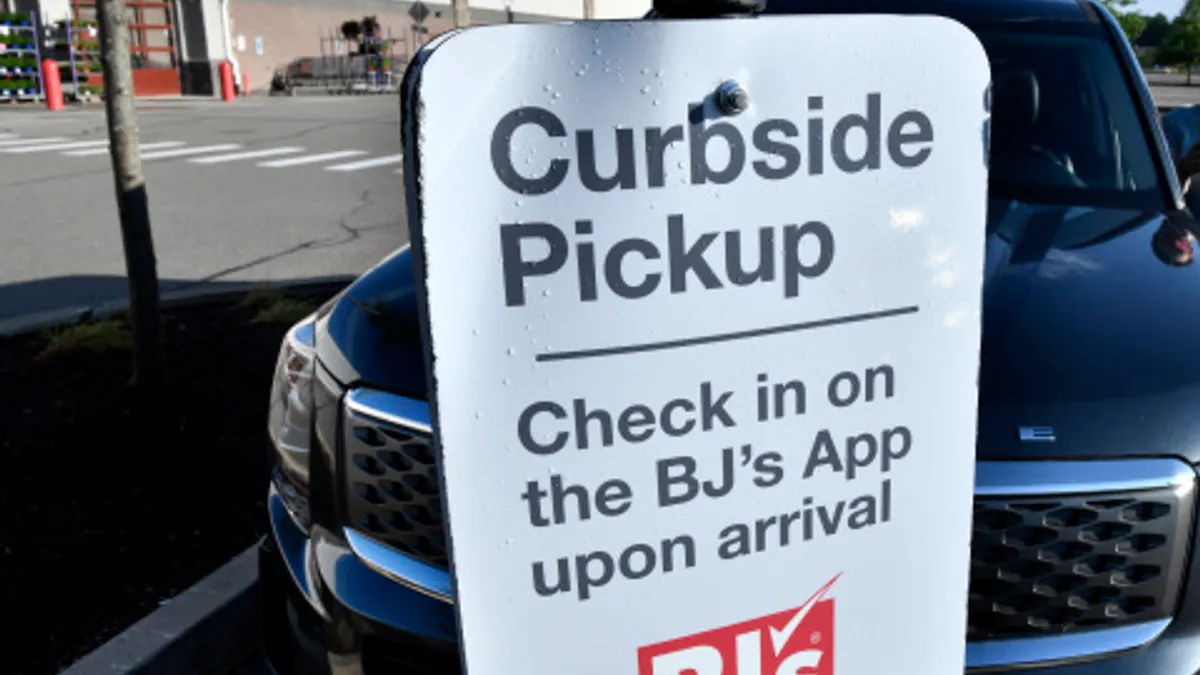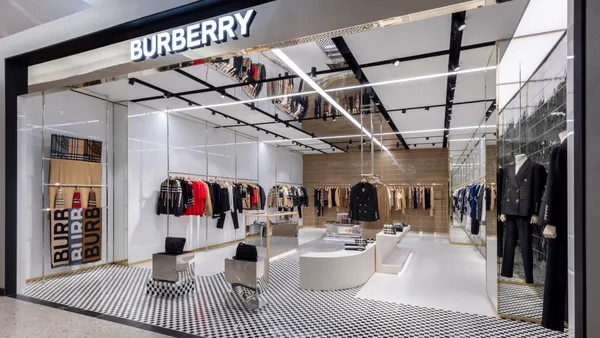Dive Brief:
-
E-commerce, already on the rise when it was propelled by the pandemic, could lead stores worldwide to dedicate as much as a third of their space to online order fulfillment, according to research from Edge by Ascential.
-
That's based in part on the firm's estimate that by 2023, 34.8% of global chain retail will be online, up from 30% in 2021, rising to nearly 40% by 2025.
-
But online retail sales are considerably lower in the U.S., where even swiftly rising e-commerce is set to reach 23.6% of retail sales by 2025, according to a July report from eMarketer. Store fulfillment services are on pace to reach $140.96 billion by 2024, per that report.
Dive Insight:
E-commerce had been disrupting retail for more than two decades when the pandemic arose last year, leaving consumers to obtain much of what they wanted or needed online. That sped up that disruption, and the digital encroachment into retail, by two years, according to Edge by Ascential.
Many major players have had e-commerce for nearly as long as Amazon has existed, but last year many more joined in. The effort to stymie the spread of the disease meant keeping shoppers away from stores, and fear of the outbreak kept many away even when stores were open.
The retailers that were already experimenting with using their stores to fulfill orders, therefore, had an advantage last year. Many others (even mom-and-pops and small chains not used to selling online) that previously operated only offline began taking online orders for the first time, fulfilling them via curbside pickup, local delivery or shipping.
As stores have reopened post-lockdown, U.S. e-commerce growth has tempered somewhat. But the accelerated growth will mean a much higher proportion of online sales, especially in certain categories. Worldwide, Edge by Ascential estimates that the share of in-store sales will decline to 62.4% by 2025, down from about 70% this year and from 87% in 2015.
The shift won't likely be smooth, or cheap. Countervailing forces, like landlords amenable to more generous lease terms and consumers' desire to get out and about, will help ground physical retail. Online fulfillment, whether through stores or warehouses, and last-mile delivery are more expensive and less efficient than store-based retail. In fact, e-commerce, even Amazon's, suffered supply chain and shipping constraints that continue to be felt.
Indeed, brick and mortar, as it has throughout history, remains responsible for the vast majority of commerce, especially in the U.S. While Edge by Ascential researchers focus on the need to leverage stores to accommodate online shoppers, they also note that physical stores remain essential to marketing and sales. Online and offline may be blurred, but the importance of stores is clear, according to David Gordon, director, omnichannel insights, Edge Retail Insight.
"[T]he store of the future must become a physical portal into brand and product experiences — becoming places where consumers can be inspired, learn, co-work, socialise, and experiment with new products, while using digital touchpoints, such as mobile phones and social media, and other technology advancements to drive in-store traffic and enable physical stores to operate as part of a broader, interconnected ecosystem," Gordon said in a statement. "This will mean, among other things, that the store network will become an increasingly vital part of last-mile fulfilment."















